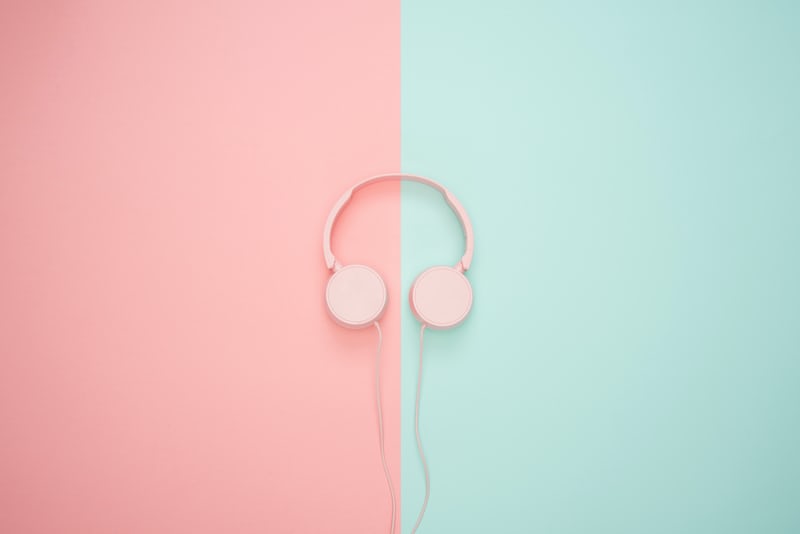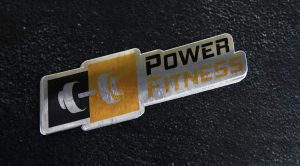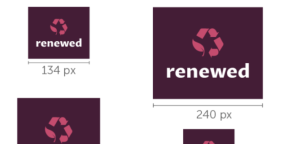Are you looking to create a logo that is both eye-catching and sophisticated? Look no further than pastel colors. Pastels are a range of soft, muted colors that can add a touch of elegance to any design. Whether you’re creating a logo for a new business or refreshing an existing one, incorporating pastel colors can help you achieve a unique and memorable look.
When it comes to logo design, color is a crucial element. Not only can it convey the personality and values of your brand, but it can also influence how people perceive your business. Pastel colors are often associated with calmness, serenity, and femininity. However, they can also be used to create a playful, whimsical, or retro vibe depending on the shades and combinations you choose. In this article, we’ll explore the world of pastel colors and logo design, and provide you with some tips and inspiration to help you create a stunning and effective logo.
Pastel Colors in Logo Design
When it comes to logo design, color plays a crucial role in creating a brand’s identity. Pastel colors have become increasingly popular in recent years, and for good reason. In this section, we’ll explore why pastel colors are a great choice for logo design, and the psychology behind these soft hues.
Why Pastel Colors?
Pastel colors are soft, muted shades that are created by adding white to pure hues. These colors are often associated with calmness, tranquility, and relaxation. Pastel colors are also versatile and can be used in a wide range of industries, from beauty and fashion to technology and healthcare.
One of the biggest advantages of using pastel colors in logo design is their ability to create a sense of approachability and friendliness. Pastel colors are less intense than their brighter counterparts and can be used to create a warm and welcoming feel.
Another advantage of using pastel colors is their ability to create a sophisticated and elegant look. Pastel colors are often associated with luxury and high-end brands, making them a great choice for businesses that want to convey a sense of refinement and exclusivity.
Psychology of Pastel Colors
The psychology of color is a fascinating field, and pastel colors are no exception. Here’s a breakdown of some of the emotions and associations that are commonly associated with pastel colors:
- Pink: Pink is often associated with femininity, romance, and sweetness. Lighter shades of pink can create a sense of innocence and playfulness, while darker shades can create a more sophisticated and elegant look.
- Blue: Blue is often associated with calmness, trust, and reliability. Lighter shades of blue can create a sense of serenity and tranquility, while darker shades can create a more professional and authoritative look.
- Green: Green is often associated with nature, growth, and harmony. Lighter shades of green can create a sense of freshness and vitality, while darker shades can create a more traditional and conservative look.
- Yellow: Yellow is often associated with optimism, happiness, and energy. Lighter shades of yellow can create a sense of playfulness and joy, while darker shades can create a more sophisticated and refined look.
- Purple: Purple is often associated with creativity, luxury, and sophistication. Lighter shades of purple can create a sense of romance and mystery, while darker shades can create a more regal and majestic look.
In conclusion, pastel colors are a great choice for logo design due to their versatility, approachability, and sophistication. By understanding the psychology behind these soft hues, you can create a logo that not only looks great but also resonates with your target audience.
Creating a Pastel Colors Logo
https://www.youtube.com/watch?v=EHiJn3TZzCY&embed=true
If you’re looking to create a logo with a soft and delicate aesthetic, pastel colors are a great choice. Pastel colors are muted shades that have a low saturation and high lightness, making them gentle on the eyes and perfect for creating a calming and soothing effect.
Choosing the Right Pastel Colors
When choosing pastel colors for your logo, it’s important to consider the emotions and feelings you want to convey. Pastel colors are often associated with innocence, gentleness, and tranquility, but they can also be used to evoke feelings of playfulness, creativity, and fun.
To choose the right pastel colors for your logo, you can start by looking at color palettes and combinations online. Look for inspiration in nature, art, and design trends. Identify the pastel hues that resonate with your brand’s personality and values.
You can also use color psychology to guide your choice of pastel colors. For example, pink is often associated with femininity and romance, while blue is associated with trust and reliability. Yellow is often associated with happiness and optimism, while green is associated with growth and harmony.
Balancing Pastel Colors
When designing a pastel colors logo, it’s important to balance the colors to ensure that they work well together and don’t overwhelm the design. Too many pastel colors can make the logo look washed out or too busy, so it’s important to limit the number of colors you use.
One way to balance pastel colors is to use a neutral color as a background or accent. White, gray, and beige are great choices for neutral colors that can help balance out the pastel hues.
You can also use bold or dark colors as accents to add contrast and depth to your pastel colors logo. Black, navy, and dark green are great choices for accent colors that can help make your logo pop.
In summary, creating a pastel colors logo involves choosing the right pastel colors that align with your brand’s personality and values, and balancing those colors to ensure that they work well together and don’t overwhelm the design. By following these tips, you can create a beautiful and effective pastel colors logo that stands out and resonates with your audience.
Pastel Colors Logo Design Examples
Pastel colors are a popular choice for logo design because they convey a sense of calmness, softness, and elegance. They are often associated with femininity, but can be used for any brand that wants to create a gentle and approachable image. In this section, we will explore some successful brands that use pastel colors in their logos and how different industries use pastel colors to create a unique brand identity.
Successful Brands Using Pastel Colors
- Airbnb: Airbnb’s logo features a combination of pastel colors, including pink, blue, and yellow. These colors create a warm and welcoming feeling that is in line with Airbnb’s brand identity, which is all about creating a comfortable and homey experience for travelers.
- Glossier: Glossier’s logo is a perfect example of how pastel colors can be used to create a feminine and playful brand identity. The logo features a soft pink color that is both elegant and approachable, which is in line with Glossier’s brand values of inclusivity and beauty for all.
- Instagram: Instagram’s logo is a perfect example of how pastel colors can be used to create a fun and playful brand identity. The logo features a gradient of pastel colors, including pink, orange, and yellow, which create a sense of vibrancy and energy that is in line with Instagram’s brand values of creativity and self-expression.
Pastel Colors in Different Industries
- Fashion: Pastel colors are a popular choice for fashion brands because they create a sense of elegance and sophistication. Brands like Chanel and Dior use pastel colors in their logos to create a sense of luxury and exclusivity.
- Food and Beverage: Pastel colors are a popular choice for food and beverage brands because they create a sense of freshness and purity. Brands like Starbucks and Dunkin’ Donuts use pastel colors in their logos to create a sense of warmth and friendliness.
- Technology: Pastel colors are a popular choice for technology brands because they create a sense of innovation and creativity. Brands like Apple and Google use pastel colors in their logos to create a sense of simplicity and approachability.
In conclusion, pastel colors are a great choice for logo design because they create a soft and approachable image that can be used for a variety of industries. By using pastel colors in your logo, you can create a brand identity that is both elegant and playful, and that resonates with your target audience.
Tips and Tricks for Designing with Pastel Colors
When it comes to designing with pastel colors, there are a few tips and tricks that can help you make the most of these soft, delicate hues. Here are some things to keep in mind as you create your next pastel-colored masterpiece.
Avoiding Common Mistakes
While pastel colors can be a great choice for many design projects, there are some common mistakes that designers often make when working with these hues. Here are a few things to avoid:
- Using too many pastels: While pastels can be beautiful, using too many of them can create a washed-out, bland effect. Try pairing pastels with bolder, more saturated colors to add some contrast and interest to your design.
- Failing to consider context: Pastels may not be appropriate for every design project. Consider the context of your design and the message you want to convey before deciding to use pastels.
- Ignoring contrast: Pastels can be tricky to work with when it comes to contrast. Make sure that your design has enough contrast to be easily readable and visually appealing.
Maximizing the Impact of Pastel Colors
If you’re looking to make the most of pastel colors in your design work, here are some tips to help you do just that:
- Pair pastels with neutrals: Pastels can be paired with a range of neutrals, including white, black, gray, and beige, to create a soft, sophisticated look.
- Use pastels for branding: Pastel colors can be a great choice for branding, especially if you’re targeting a younger or more feminine audience.
- Experiment with color combinations: Pastels can be combined in a variety of ways to create different moods and effects. Try experimenting with different combinations to find the perfect palette for your project.
By keeping these tips and tricks in mind, you’ll be well on your way to creating beautiful, effective designs with pastel colors.
Future of Pastel Colors in Logo Design
Pastel colors have been a popular choice in logo design for many years, and their popularity is only increasing. They are soft, soothing, and convey a sense of calmness and elegance. With the increasing demand for minimalistic and simplistic designs, pastel colors are becoming more and more relevant.
In the future, pastel colors will continue to be a popular choice in logo design. They are versatile and can be used in a variety of industries, from fashion to technology. Pastel colors are also perfect for creating a brand identity that is both modern and timeless. They are not a passing fad, but rather a classic choice that will stand the test of time.
One of the reasons pastel colors are so popular is that they are easy on the eyes. They are not as harsh as bright colors, which can be overwhelming. Pastel colors are perfect for creating a sense of calmness and serenity, which is important in today’s fast-paced world.
Another reason pastel colors are becoming more popular is that they are gender-neutral. They are not associated with any particular gender, which makes them a great choice for brands that want to appeal to a wide audience.
In conclusion, the future of pastel colors in logo design is bright. They are a timeless choice that will continue to be popular for years to come. If you are looking to create a brand identity that is both modern and timeless, pastel colors are definitely worth considering.
Marietta Arnold is a branding and design enthusiast who draws inspiration from hobbies like hiking, photography, and art exploration. With a background in graphic design, she shares insights on branding strategies and logo design trends. Stay updated with Marietta’s work for the latest in branding and design.



